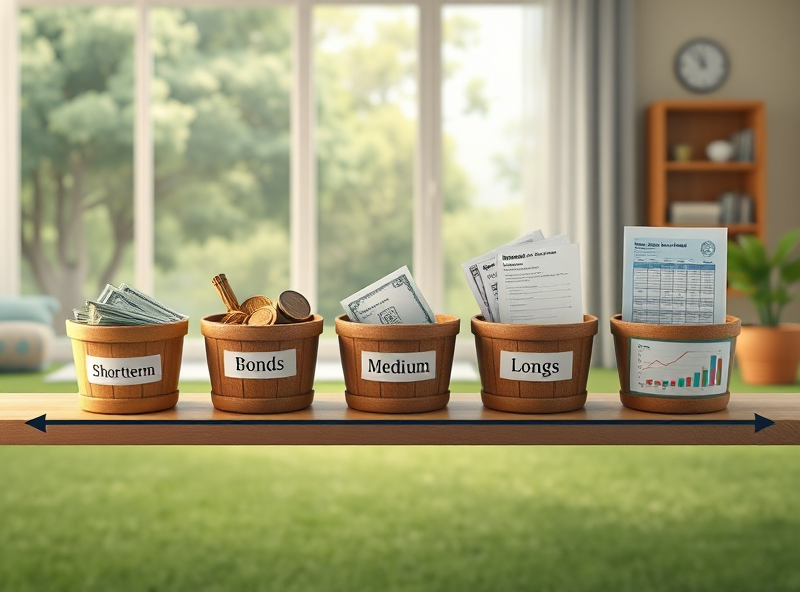
Bucket Strategy for Retirement Income: How to Secure a Stable Post-Retirement Cash Flow

Planning for retirement can feel overwhelming, especially when it comes to ensuring a steady stream of income after you stop working. One proven and increasingly popular method among financial planners in the United States is the Bucket Strategy. This approach helps retirees manage risk, reduce anxiety, and maintain financial stability throughout retirement. In this article, I’ll walk you through how the Bucket Strategy works, its benefits, and how you can implement it effectively.
What Is the Bucket Strategy?
The Bucket Strategy is a retirement income planning method that divides your savings into different “buckets” based on the time horizon for when the money will be needed. Typically, these buckets are categorized as short-term, medium-term, and long-term. Each bucket is invested differently to match the level of risk appropriate for the time frame.
– Bucket 1: Short-term (0–2 years) – This bucket contains cash or cash equivalents like savings accounts, money market funds, or short-term CDs. The goal is to cover immediate living expenses without worrying about market volatility.
– Bucket 2: Medium-term (3–10 years) – This bucket may include bonds or balanced mutual funds. It aims to provide moderate growth while preserving capital.
– Bucket 3: Long-term (10+ years) – This bucket is invested in growth-oriented assets like stocks or stock mutual funds. Since this money won’t be needed for a decade or more, it has time to recover from market downturns.
Why the Bucket Strategy Works
The strength of the Bucket Strategy lies in its psychological and financial benefits. By having a short-term bucket filled with low-risk assets, retirees can avoid selling long-term investments during market downturns. This helps prevent the common mistake of locking in losses by withdrawing from stock-heavy portfolios during a bear market.
Additionally, the strategy provides peace of mind. Knowing that your near-term expenses are covered allows you to invest more confidently for the long term.
How to Build Your Buckets
To implement the Bucket Strategy, start by estimating your annual retirement expenses. Then, allocate your assets accordingly:
1. Calculate how much you’ll need for the next 1–2 years and place that amount in Bucket 1.
2. For years 3–10, estimate your spending and invest that amount in Bucket 2.
3. The remaining funds go into Bucket 3 for long-term growth.
Rebalancing is key. Each year, you should review your buckets and refill the short-term bucket using funds from the other buckets, ideally when markets are performing well.
Tax Considerations
When applying the Bucket Strategy, it’s important to consider the tax implications of withdrawing from different types of accounts. For example:
– Traditional IRAs and 401(k)s are taxed as ordinary income upon withdrawal.
– Roth IRAs offer tax-free withdrawals if certain conditions are met.
– Taxable brokerage accounts may incur capital gains taxes.
Work with a tax advisor to develop a withdrawal strategy that minimizes your tax burden while keeping your buckets funded.
Who Should Use the Bucket Strategy?
The Bucket Strategy is ideal for retirees who prefer a structured, conservative approach to managing retirement income. It’s especially helpful for those who are risk-averse or who want to avoid selling investments during market downturns.
However, it may not be suitable for everyone. High-net-worth individuals with guaranteed income sources (like pensions or annuities) may prefer other strategies. Always consult with a certified financial planner (CFP) to determine the best approach for your situation.
Common Mistakes to Avoid
– Not rebalancing buckets regularly
– Underestimating expenses
– Ignoring inflation
– Failing to adjust the strategy as your needs change
Make sure to revisit your plan annually and adjust your allocations based on market performance and life changes.
Conclusion
The Bucket Strategy offers a practical and psychologically comforting way to manage retirement income. By segmenting your savings based on time horizon and risk tolerance, you can create a stable, predictable cash flow that supports your lifestyle throughout retirement.
Remember, retirement planning is not one-size-fits-all. Use the Bucket Strategy as a foundation, but tailor it to your unique financial goals and needs.
Disclaimer
This article is for informational purposes only and does not constitute financial, legal, or tax advice. Always consult with a licensed financial advisor or tax professional before making decisions regarding your retirement planning. The author and publisher are not responsible for any financial losses or decisions made based on the information provided in this article.
Sources
– U.S. Securities and Exchange Commission (SEC): https://www.investor.gov
– FINRA: https://www.finra.org
– IRS: https://www.irs.gov
– Certified Financial Planner Board of Standards: https://www.cfp.net








답글 남기기